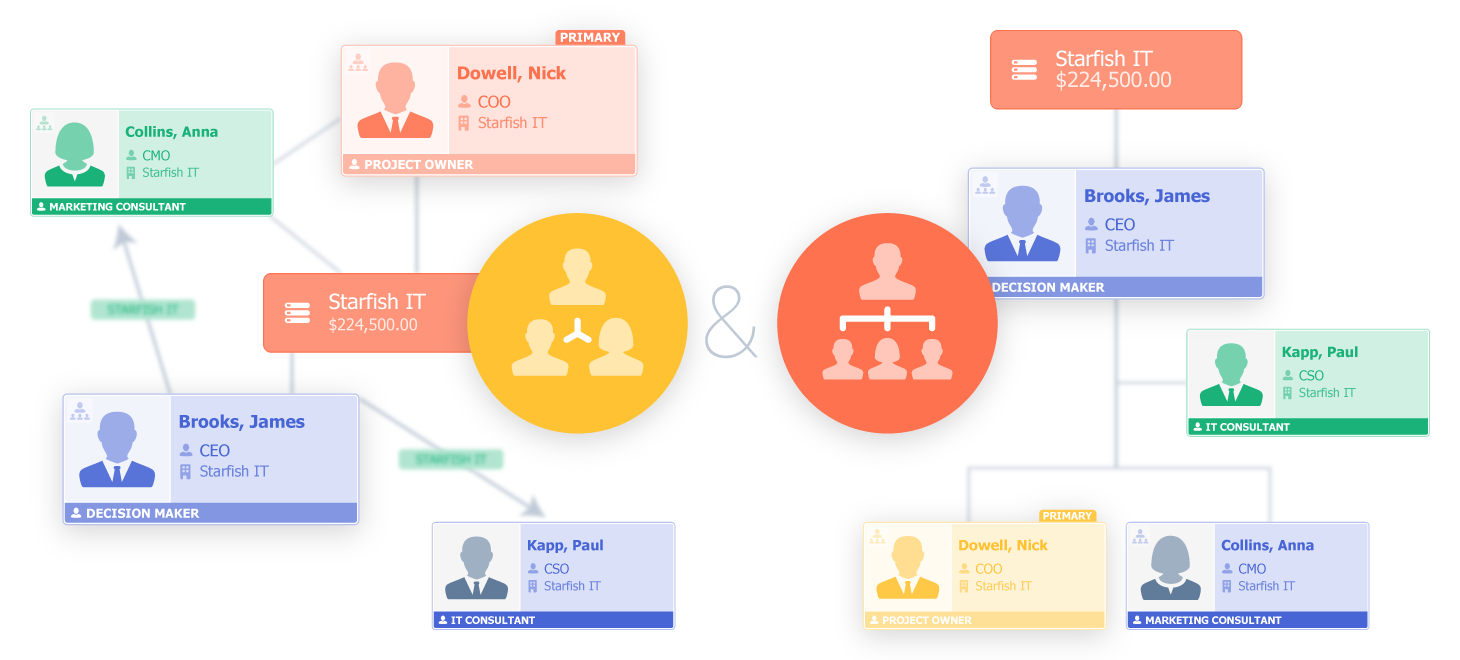Manufacturing
One problem that is peculiar to manufacturing is the number of people on both sides of the buying-selling proposition. On the manufacturer side, you have production, sales, support and often distributors, partners and others involved. On the buyerBuyer A buyer is an individual or organizational entity that purchases a product or subscribes to a service.’s side, you can also have a number of people involved in the decision-making process quite in addition to the original contact or buyer.
In addition to the basic hierarchy—which is obviously important—different individuals may have substantial influence on the purchase despite higher or lower positions in the company. There may also be others outside the company, such as consultants, who are influencing the purchase as well.
It’s vitally important to keep track of both the hierarchy and lines of influence participating on purchase. Other than keeping detailed notes, though, how is this done?
A CRM application should make it easy to keep track of all of the different decision makers for an accountAccount Account refers to a record of primary and background information about an individual or corporate customer, including contact data, preferred services, and transactions with your company. and opportunity, and how they relate to each other. Any person stepping in on the opportunity should be able to instantly tell how the person they are communicating with relates to the buying process.

Pipeliner
Pipeliner deals squarely with this issue, with 2 outstanding features.
Smart Org Chart
The Smart Org Chart is your “hierarchy at a glance” for your prospect company. You can instantly drag-and-drop all contacts for a company into the chart, and visually display the hierarchy–who reports to whom. When a sales rep must make contact with a person in the prospect company, the rep will always know to whom they’re talking, where they are positioned in the company hierarchy, and who else might need convincing in order to close the sale.
Buying Center—Instant View of Influence
From the Smart Org Chart, you can then instantly import contacts into the Buying Center. Within the Buying Center the contacts can be arranged according to influence on the purchase.
For the Buying Center you can also add in other contacts that aren’t actually employed with the Account—such as consultants or others the buyer listens to—that may not be part of the company hierarchy.
You now have instant visual relationship maps of both hierarchy and buying influence within your prospect company–another Pipeliner CRM first.
